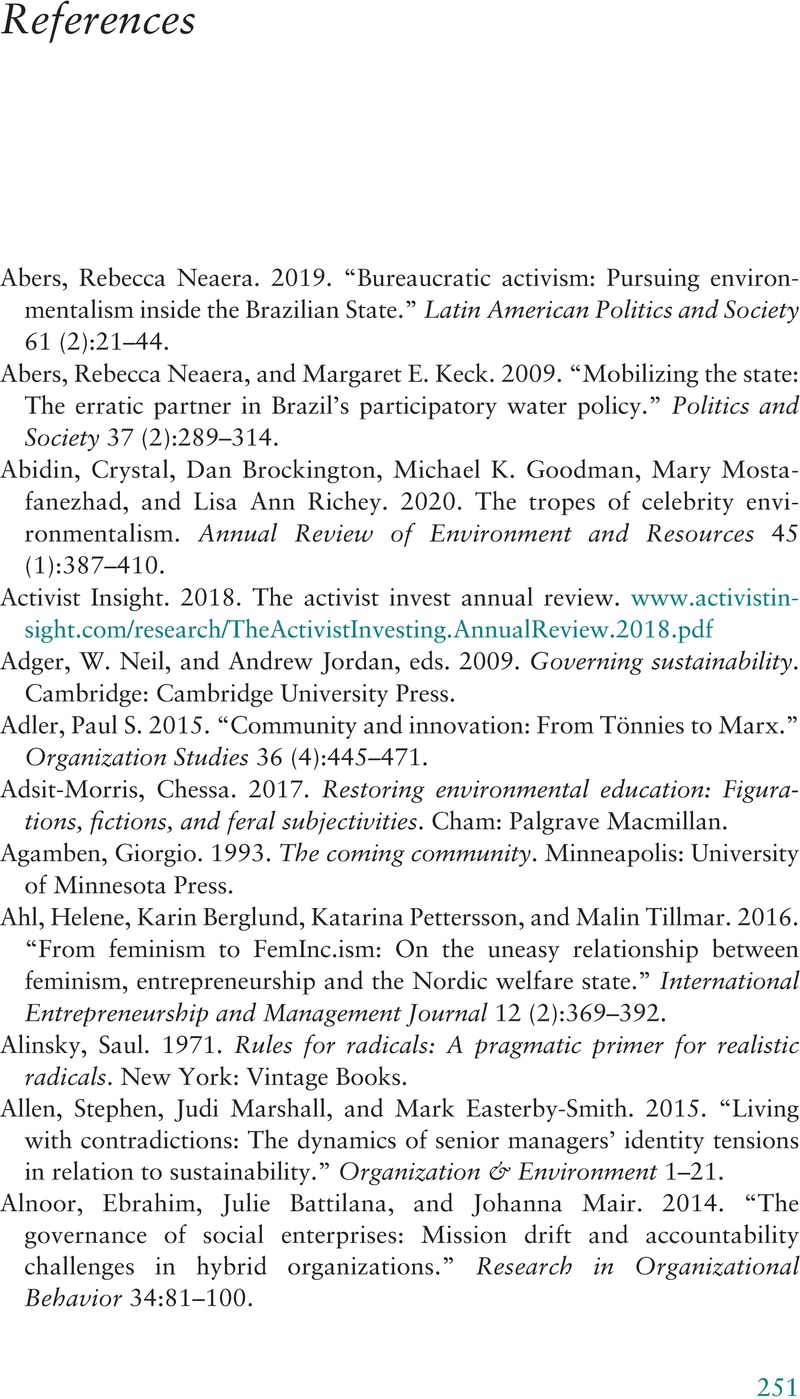Book contents
- Climate Activism
- Business, Value Creation and Society
- Climate Activism
- Copyright page
- Contents
- Figures
- Foreword
- Preface
- Acknowledgements
- Introduction
- 1 Boundaryless Activism
- 2 The Activist–Business–State Conglomeration
- 3 Activism and Its Collective Force
- 4 Epistemic Community
- 5 Climate Activism at Vattenfall
- 6 Climate Activism via Small and Medium-Sized Enterprises
- 7 Climate Activism in Governmental Authorities
- 8 Climate Activism via Citizen Groups
- 9 New Ways of Knowing
- 10 Horizontal Organising
- Appendix
- References
- Index
- References
References
Published online by Cambridge University Press: 09 November 2022
- Climate Activism
- Business, Value Creation and Society
- Climate Activism
- Copyright page
- Contents
- Figures
- Foreword
- Preface
- Acknowledgements
- Introduction
- 1 Boundaryless Activism
- 2 The Activist–Business–State Conglomeration
- 3 Activism and Its Collective Force
- 4 Epistemic Community
- 5 Climate Activism at Vattenfall
- 6 Climate Activism via Small and Medium-Sized Enterprises
- 7 Climate Activism in Governmental Authorities
- 8 Climate Activism via Citizen Groups
- 9 New Ways of Knowing
- 10 Horizontal Organising
- Appendix
- References
- Index
- References
Summary

- Type
- Chapter
- Information
- Climate ActivismHow Communities Take Renewable Energy Actions Across Business and Society, pp. 251 - 292Publisher: Cambridge University PressPrint publication year: 2022



